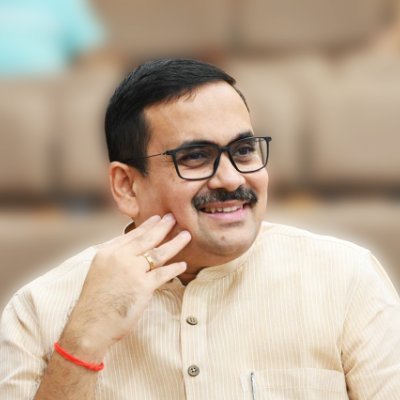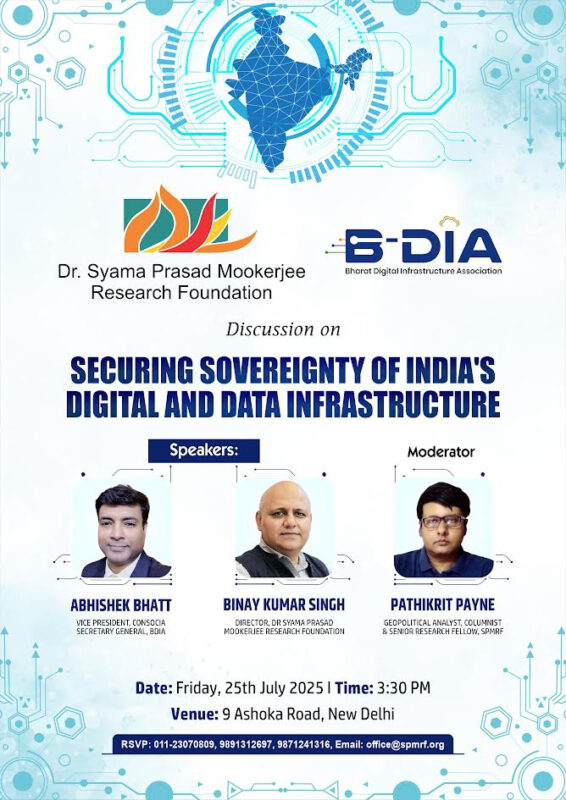Submitting to the relentless campaign of Jana Sangh, Nehru shed his 14-year long procrastination in 1961 to liberate Goa and ‘complete India’s independence’
The Jana Sangh argued that while Nehru denounced colonialism all across the world, he did little to adopt a firm stand against these vestiges of colonialism in India and that by banning Indian citizens from entering these territories for liberation Nehru’s government had affronted Indian public opinion. Terming Nehru’s policy ‘weak-kneed’, the Jana Sangh warned that this would ‘create further complications and make the liquidation of these pockets more difficult in future.’ Calling upon ‘all countrymen and its workers and sympathisers in particular to take up the cause of the liberation’ of these foreign-held Indian territories, the Jana Sangh decided to hold a countrywide ‘Goa Mukti Saptah’ (Goa Liberation Week) from September 9 to September 16, 1954. A year later on June 13, 1955, the Jana Sangh’s Central Working Committee resolved to send ‘the first batch of 101 satyagrahis into Goa on June 23, the martyrdom day of Dr Mookerjee.’ Jagannath Rao Joshi (1920-1991), then Secretary, All India Jana Sangh, was designated to lead this batch.
Lok Sabha discussed the situation in Goa on July 26, 1955. Participating in the discussion, JB Kripalani made some very perceptive interventions. ‘It has been often said,’ argued Kripalani, ‘that the question of the independence of Goa or the Goan struggle is primarily the concern of the people of Goa. This may be true if the Goans wanted their independence apart from India as an isolated piece of territory. But what the Goans want is integration with India’ and therefore, the Goan struggle was ‘only the last stage in the national struggle for independence.’ ‘We fought for the freedom of the whole of India and not any part thereof’. Kripalani reminded Nehru ‘we cannot allow any part of our territory to remain under foreign yoke, under colonial rule and think that we have attained complete freedom.’
It was a fact that no one could deny. Kripalani told the House that ‘geographically, Goa is in India and our interests – political, social and economic – are identical; even our cultural interests are identical. How then can this portion of territory be allowed to remain outside India?’ he asked. To Nehru’s insistence on ‘non-violence’, Kripalani asked whether India as a nation was pledged to it, ‘is the Indian government as government pledged to non-violence? So far as I know, the Indian government maintains an army and it wants it to be more and more efficient…When occasion has arisen, we have used our armed forces as we did in Kashmir and in Hyderabad…Therefore, we cannot say that we as a nation are pledged to non-violence.’ On Nehru’s point that war solved no problem, Kripalani mounted a sharp and cogent counter calling for a ‘limited war with orthodox [conventional] weapons – it will be just as in Hyderabad – or you have satyagraha.’ He saw no third way. A limited war was, to him, as near satyagraha as possible. Gandhiji, Kripalani argued, ‘considered legitimate violent resistance as near to satyagraha as possible.’
To Nehru’s contention that it was not consistent with India’s dignity to ‘crush a fly like Portugal’, Kripalani countered, ‘But this fly is a very poisonous fly; it attacks innocent people.’ In one year, he told the House that ‘they have imprisoned 2,500 people and 110 people have been awarded punishments of 900 years’ imprisonment – the maximum punishment being 38 years. There is no end to lathi charges and there is no end to the woes of our people; even women have been molested.’
AK Gopalan (AKG) of the CPI, in his intervention, described the barbarous attacks on satyagrahis. ‘When they fall down, soldiers with nails on their shoes jump on them; they shave their eye-brows and also their heads…One would be surprised to see that in 1955 such things are happening and such is the treatment meted out to satyagrahis.’ Kripalani called upon the Nehru government to make up its mind, and whatever it did, ‘whether it is a limited war or whether it is a police action, whether it is satyagraha – I can assure them that the country will be with them. The country cannot be with them if no action is taken and they rely merely upon diplomacy.’
Jana Sangh’s UM Trivedi, an erstwhile associate of Syama Prasad Mookerjee, spoke of drawing the red line, ‘we should at some stage say thus far and no further…we cannot go on waiting till eternity. And, certainly not when we have got the power to do a particular thing. When we have got the power to wrest the particular possessions which still remain in the hands of the Portuguese, there is no ‘reason why we should not exercise that power.’ Trivedi called for ‘police action.’
Jana Sangh organised a massive demonstration outside the Parliament during the monsoon session of 1955. A huge procession led by Pandit Deendayal Upadhyaya, Atal Bihari Vajpayee and others proceeded towards Parliament House and demanded police action in Goa. A large public meeting was held outside the Parliament, the legendary poet and cultural personality, Harindranath Chattopadhyay (1898-1990) — Sarojini Naidu’s younger brother and Kamaladevi Chattopadhyay’s husband, then an independent CPI supported Lok Sabha member from Vijayawada — ‘recited a relevant poem on the occasion.’ There was a wide unanimity and synergy on Goa and yet Nehru refused to budge, missed the opportunity and procrastinated for another six years.
The Jana Sangh presented a detailed memorandum to ‘all ministers, deputy ministers and members of Parliament’, describing the situation in Goa. Describing the Satyagraha, the memorandum spoke of how the agitation had grown ‘into a mighty force’ and also described the excesses of the Portuguese authorities which had no ‘parallel in annals of barbarism in the world.’ As leader of the first batch of satyagrahis, Jagannath Rao Joshi suffered dire consequences. His torture was excruciating. We get a mind-numbing glimpse in the pages of the Jana Sangh’s memorandum, ‘Shri Jagannath Rao Joshi has been severely beaten on his back and arms. His entire back has turned black and blue, as a result of which he could not even sleep for the first eight days. He has been kicked in his face with jackboots. His left eyes have become swollen; the fingers of his right hand have been crushed, with the third finger too swollen as it has been broken. He has not been administered any medicine except a dose of iodine. He has not been given even a mattress to lie down on, not even a fresh dhoti or pant. He is still wearing those very clothes he was wearing when he left (for satyagraha). He is being kept 24 hours in confinement in a very small cell, which is filthy and has no light at all. No one is allowed to even see or talk to him.’ Even these could not move Nehru enough, he could not identify with such torture, since he did not have to face them in British jails.
On August 16, Sri Guruji Golwalkar issued a statement condemning the Nehru government’s ‘do-nothing policy and its short-sightedness in abusing the freedom struggle through repeated declarations about not backing it.’ Sri Guruji declared that this was the ‘time to pay back with interest the atrocities perpetrated on our citizens and liberate the part of the motherland degrading in slavery.’ He pointed out that ‘no better opportunity can present itself to the government to get rid of the false ideas of international prestige and take steps in the right direction. A successful culmination of this struggle through police or other similar action without a moment’s delay will rather enhance our international prestige.’ Sri Guruji cautioned that the government ‘must bear in mind that it must do its duty; otherwise, the people will develop feelings of contempt with regard to the courage, patriotism and worth of those in power.’ Nehru would only act in December 1961, especially after he had started realising his growing isolation on the issue. But throughout these years, the Jana Sangh did let its guard down. It kept up a relentless pressure and led a sustained countrywide movement on the Goa liberation issue.
In a paper on ‘Goa and the end of Colonialism in India’, historian DP Singhal writes how Gandhi’s acolyte, a friend of India and the legendary editor of the New Statesman, Kingsley Martin (1897-1969), argued that Gandhi who was an uncompromising adversary of oppression ‘would assuredly have blamed Nehru for waiting for 14 years before completing India’s independence.’
When he recently referred in the Parliament to how Nehru had delayed liberating Goa and thus delayed completion of India’s independence, Prime Minister Narendra Modi was in fact reflecting this perception, that of Nehru waiting for 14 years to complete India’s independence. Belonging to a political lineage and himself the finest the product of that political movement – which began with the founding of Jana Sangh – which saw its workers and leaders plunge fearlessly into the struggle for liberating Goa, Modi has a legitimate right to speak on this. But on the other hand, on this issue, as on a number of other issues, the Congress, especially Nehru’s heirs, ought to keep silent and introspect. Nehru had forsaken, abandoned, opposed, and obstructed Goa Satyagrahis, allowing many of them to die and to be maimed. For him, his confused and inflated prestige came before India’s integrity and prestige. For Modi, it is the other way round, India’s prestige and integrity always comes first. He brooks no opposition to these.
(The writer is a member of National Executive Committee (NEC), BJP, and the Hony. Director of Dr Syama Prasad Mookerjee Research Foundation. Views expressed are personal)
This article was published in Millenium Post on 23rd February 2022
(The views expressed are the author's own and do not necessarily reflect the position of the organisation)



